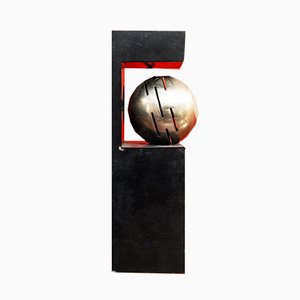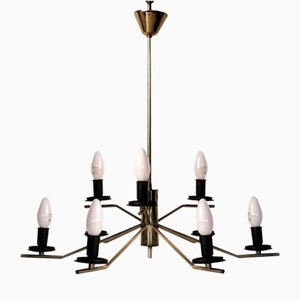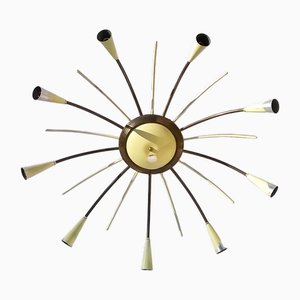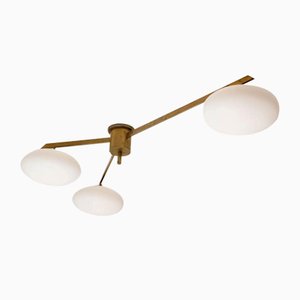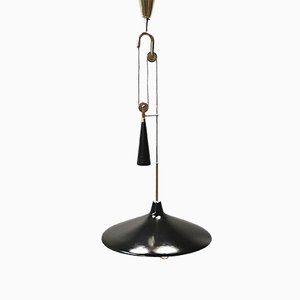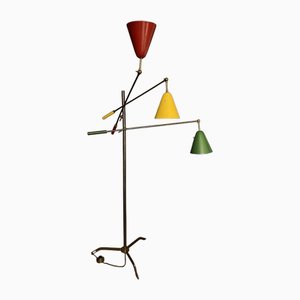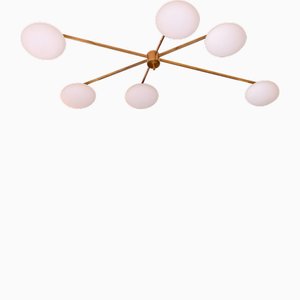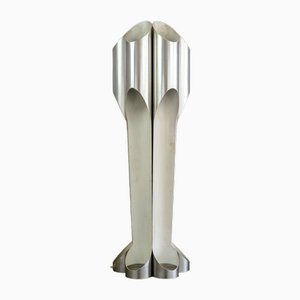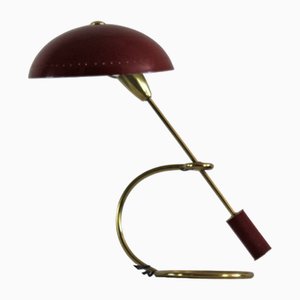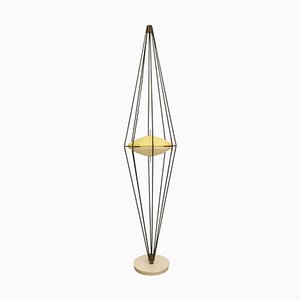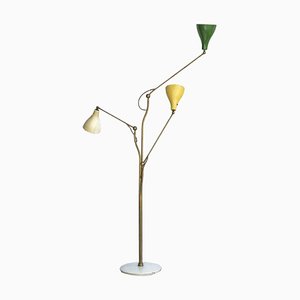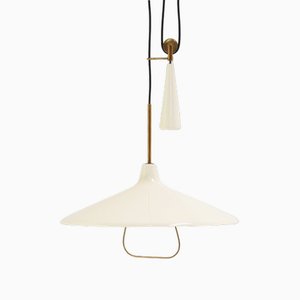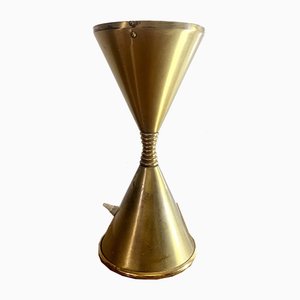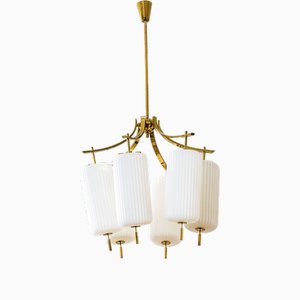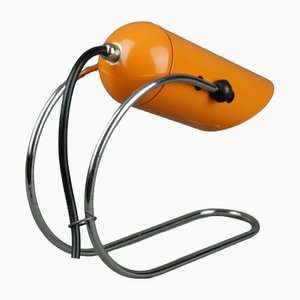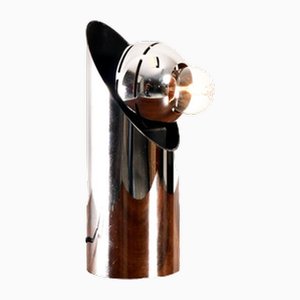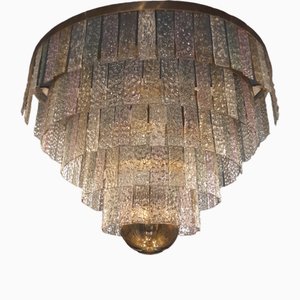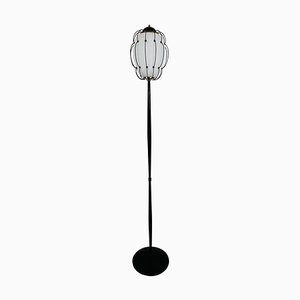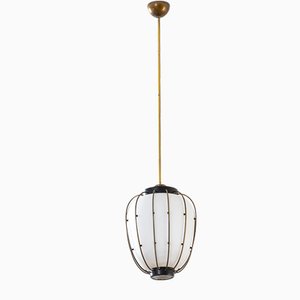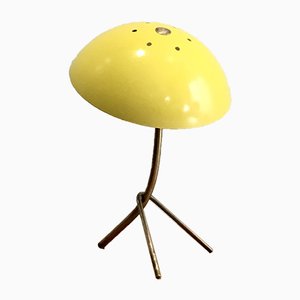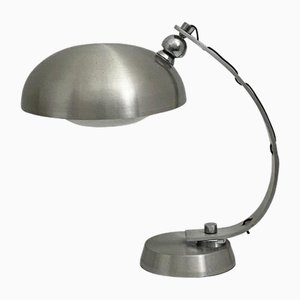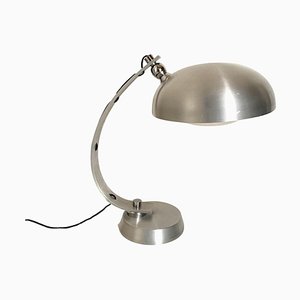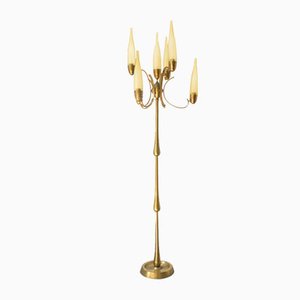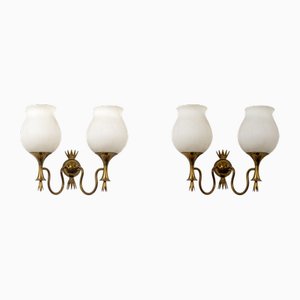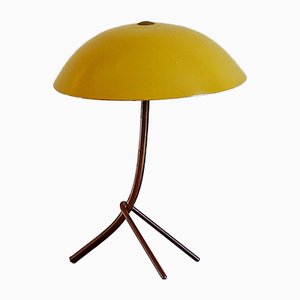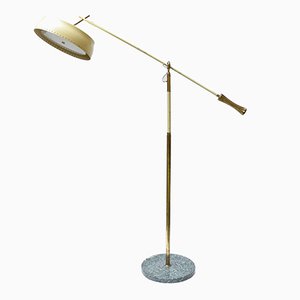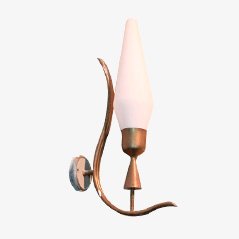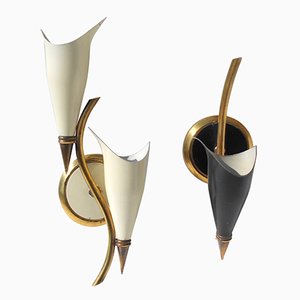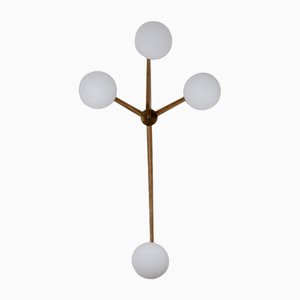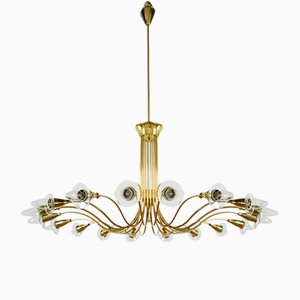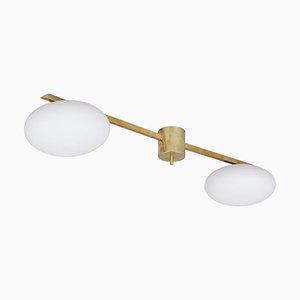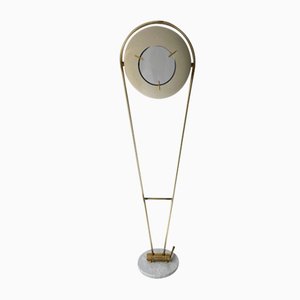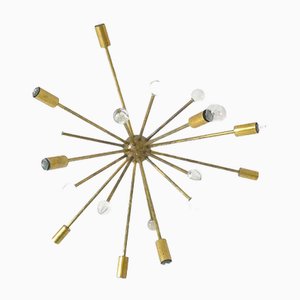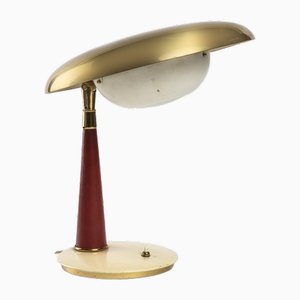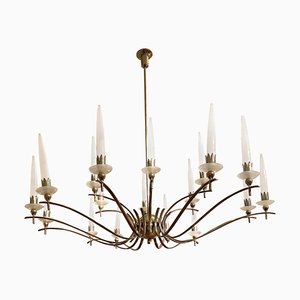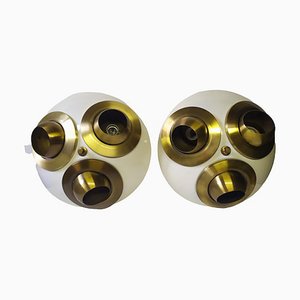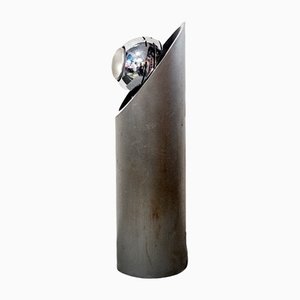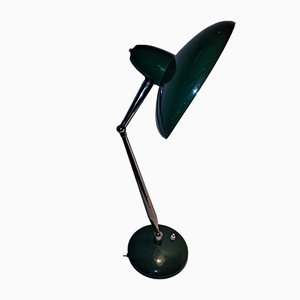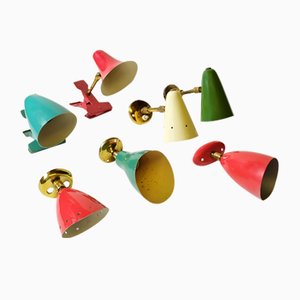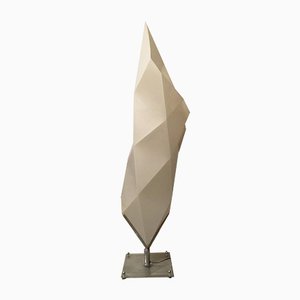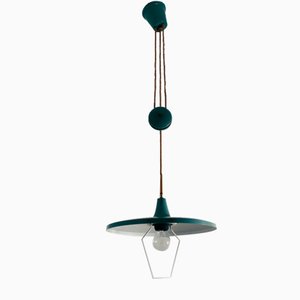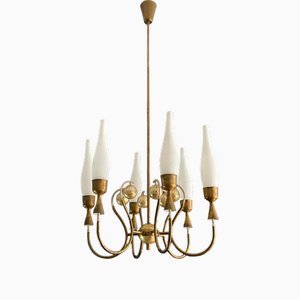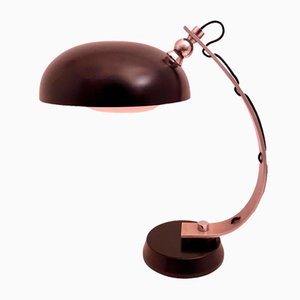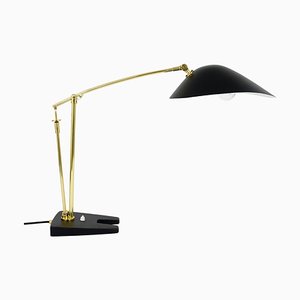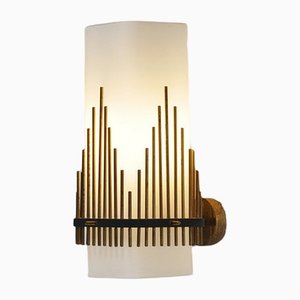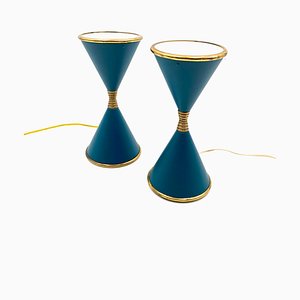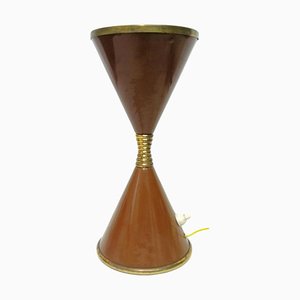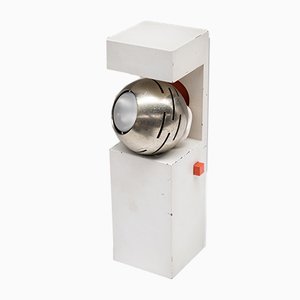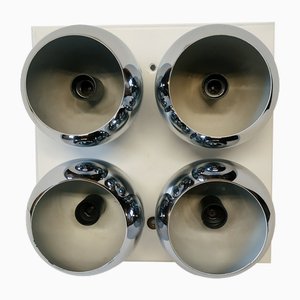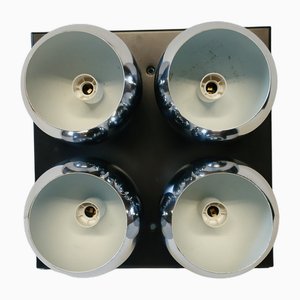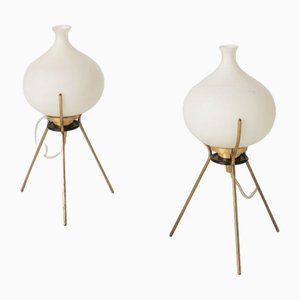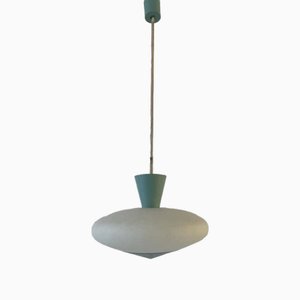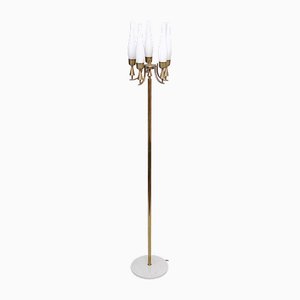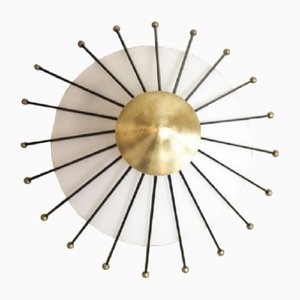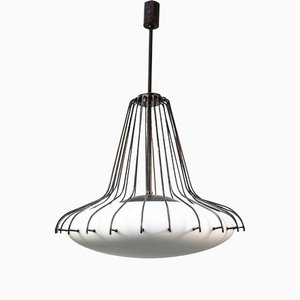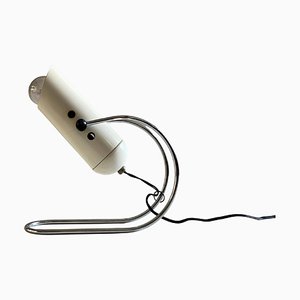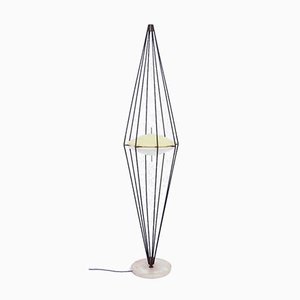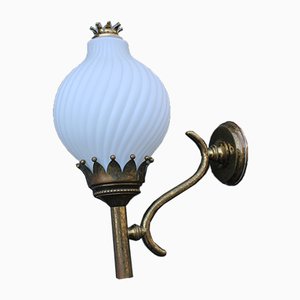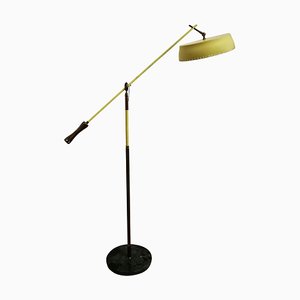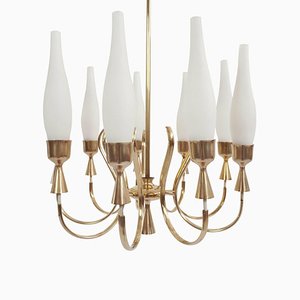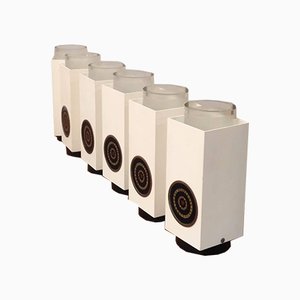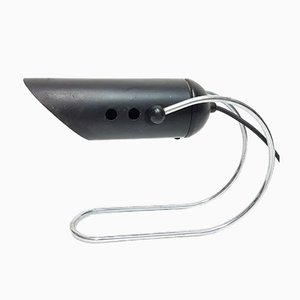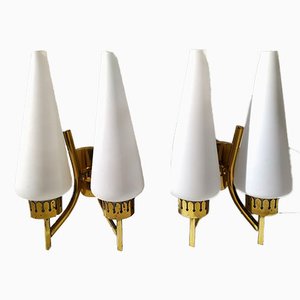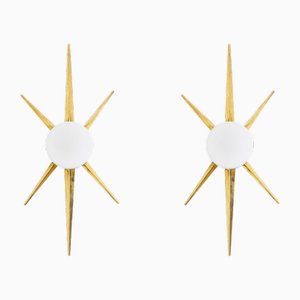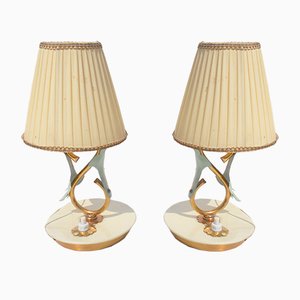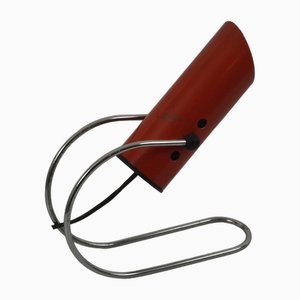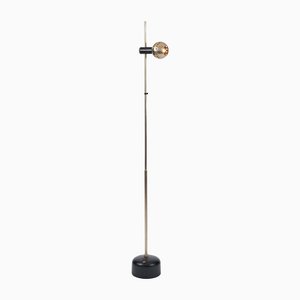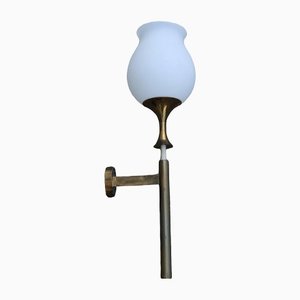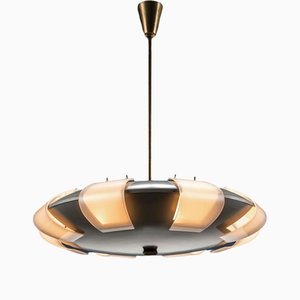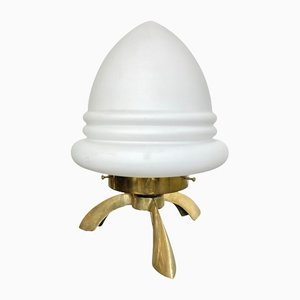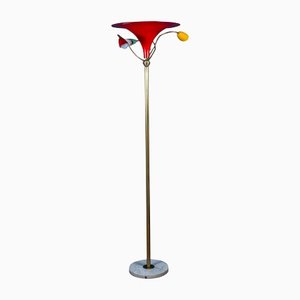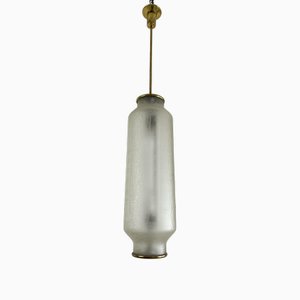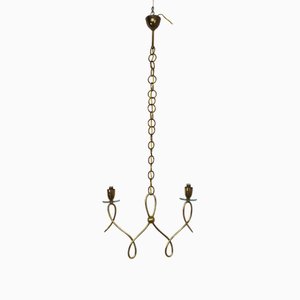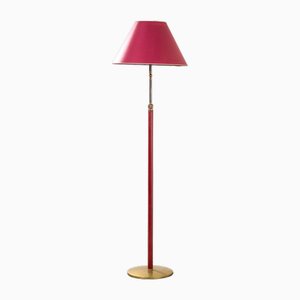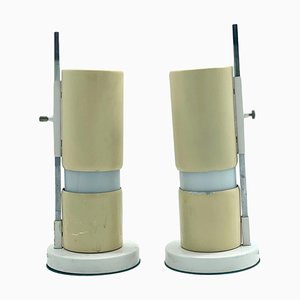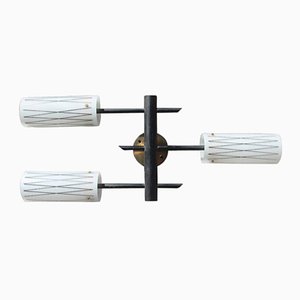
Italian designer-entrepreneur Angelo Lelli—also spelled “Lelii,” as indicated by in a surviving signature—founded the innovative lighting company Arredoluce in Manza, Italy, in the years surrounding World War II. Little biographical information on Lelli has survived, but some sources indicate he lived from 1911 to 1979. He was, nevertheless, an active and influential participant in the postwar Italian design boom and is regarded today to be a key protagonist of modernist-era lighting design, on par with his most successful contemporaries like Gino Sarfatti of Arteluce and Giuseppe Ostuni of Oluce.
According to many sources, Lelli began designing lamps in his basement before the war and caught his first big break in 1946 when his first three designs were featured in the pages of a Domus publication. The magazine—which was originally founded by design icon Gio Ponti and was, at that time, under the direction of Italian architect Ernesto Nathan Rogers—promoted pioneering designers and architects in Italy who were embracing the new functionalist trend.
By the following year, Lelli had founded Arredoluce (though some sources say the company already existed in 1939). As the company’s director and in-house designer, Lelli was instrumental in propelling Italian design to international prominence. Through Arredoluce, Lelli was responsible for the production of hundreds of artful lighting collections that have become highly sought-after on the vintage market.
Arredoluce’s vanguard collections ranged from table and floor lamps to sconces and chandeliers, developed in collaboration with design luminaries like Franco Albini, Achille and Pier Castiglioni, Vico Magistretti, Gio Ponti, Ettore Sottsass, Mario Tedeschi, and Nanda Vigo. The company’s modernist sensibilities were expressed in minimalist forms that took advantage of new technologies, often featuring articulated arms and directional shades.
Lelli’s most iconic design for Arredoluce is the three-armed Model 12128 "Triennale" Floor Lamp, the design date of which is cited by most Italian sources at 1947, while others place it later circa 1951-53. The name is most certainly drawn from the attention it garnered in an early postwar Triennale exhibition. Notably, this particular design was also manufactured in the US by Richards-Morgenthau for Raymor Corporation.
Other standouts from Lelli include the Tris Floor Lamp (ca. 1946), Stella Ceiling Light (ca. 1950), Cobra Table Lamp (ca. 1962-64), and President Lamp (ca. 1970), as well as a range of low voltage, high intensity “eye-ball” shaped spotlights in the 1960s.
Arredoluce produced lighting until its closure in 1979.

